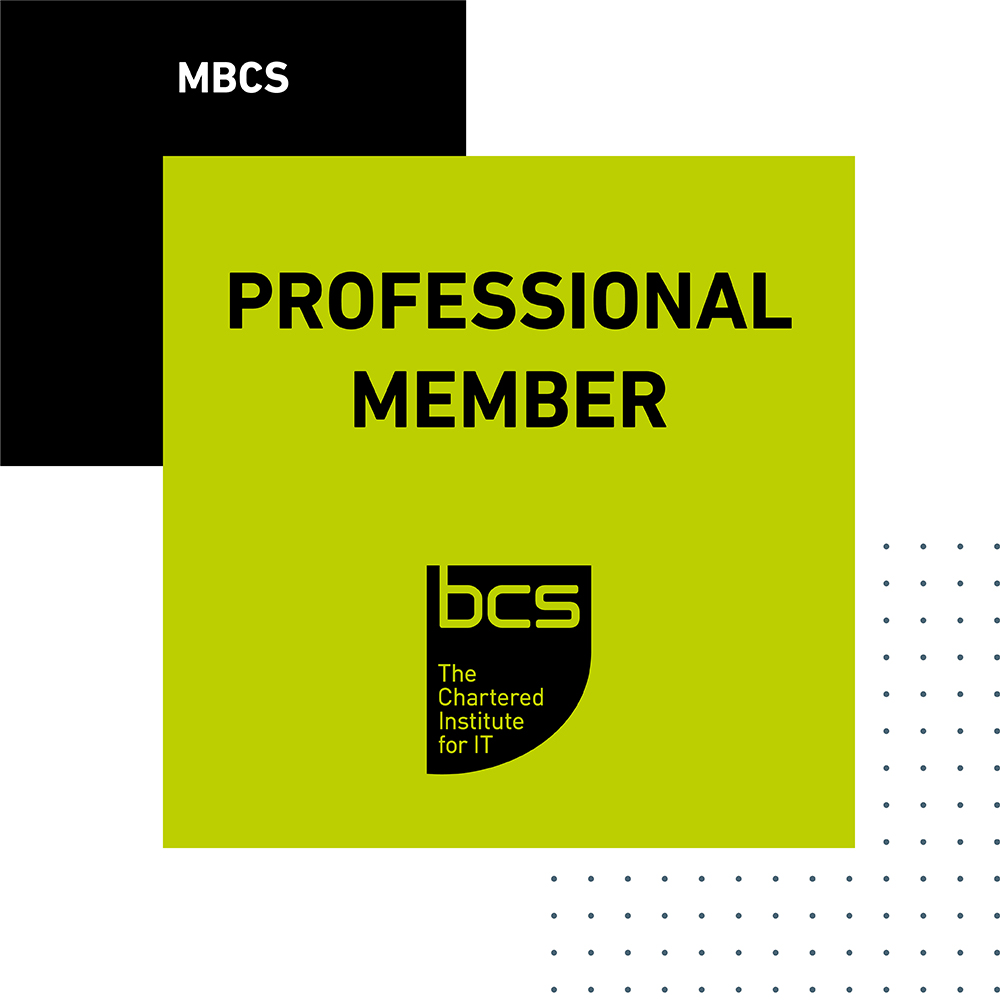I have been a professional member of the British Computer Society (BCS) for over 20 years now, and consider it an important part of my professional conduct. Being a member of a professional body in your area of work provides a degree of assurance about your commitment to maintaining professional standards of knowledge (and practice), and binds you to a professional code of conduct.
At Kent, we have several computing degrees that are accredited by the BCS, to enable a graduate to gain professional membership more easily. That being said though, the IET (Institute of Engineering and Technology), and the IAP (Institute of Analysts and Programmers) also cover the professional space of computing and it’s down to an individual preference as to which you might chose. I’ve previously been a professional member of all three and am able to say that all three offer a great level of support for members.
Being part of the professional body for your area of expertise means that you are also able to contribute to the governance of the profession. Voting for the leadership of your professional body and motions put forward to the membership is a way of exercising this, but there are many other ways to become more involved.
A day or two before we broke up for Christmas in 2023, I was awarded professional registration through the BCS in the form of Chartered IT Professional (CITP). This had been the result of a six-month journey through their review process and something that I had been keen to gain for a while. Professional registration is a recognition of your current level of competence in terms of knowledge and practice.
There are many different levels of professional registration and the BCS offer about four different types of professional registration including for engineers and technicians. The recognition partly reflects a commitment to continuing professional development (CPD). I am an advocate of CPD and it’s importance in keeping you up-to-date with best practice and your own development within the profession.
In fact I would recommend professional membership and registration to all of my colleagues that would like their commitments to professional practice recognised. Membership and registration are not necessarily cheap (depending on the professional body in your area), and this is where Kent’s Technician Commitment can help. Chartered IT Professional registration through the BCS costs about £160 and there is an annual fee of about £40. I didn’t have this readily available so I applied and was able to get the registration fee and first annual fee paid for through the Technician Commitment’s secured funding, that they had available that year, especially for professional registration. This has allowed me be recognised as a Chartered IT Professional, where money had been a barrier.
I realise that I have spoken about the areas of professional membership and registration from the perspective of computing, but nearly all areas of work and certainly all of those involving technicians within the university, are catered for by professional bodies. An important note in terms of a professional body is that (in the UK), it should have a royal charter, allowing it to provide post nominal letters to members, and recognising the pre-eminence of the body within the field. If you haven’t explored already, I recommend looking up the professional body in your area.


